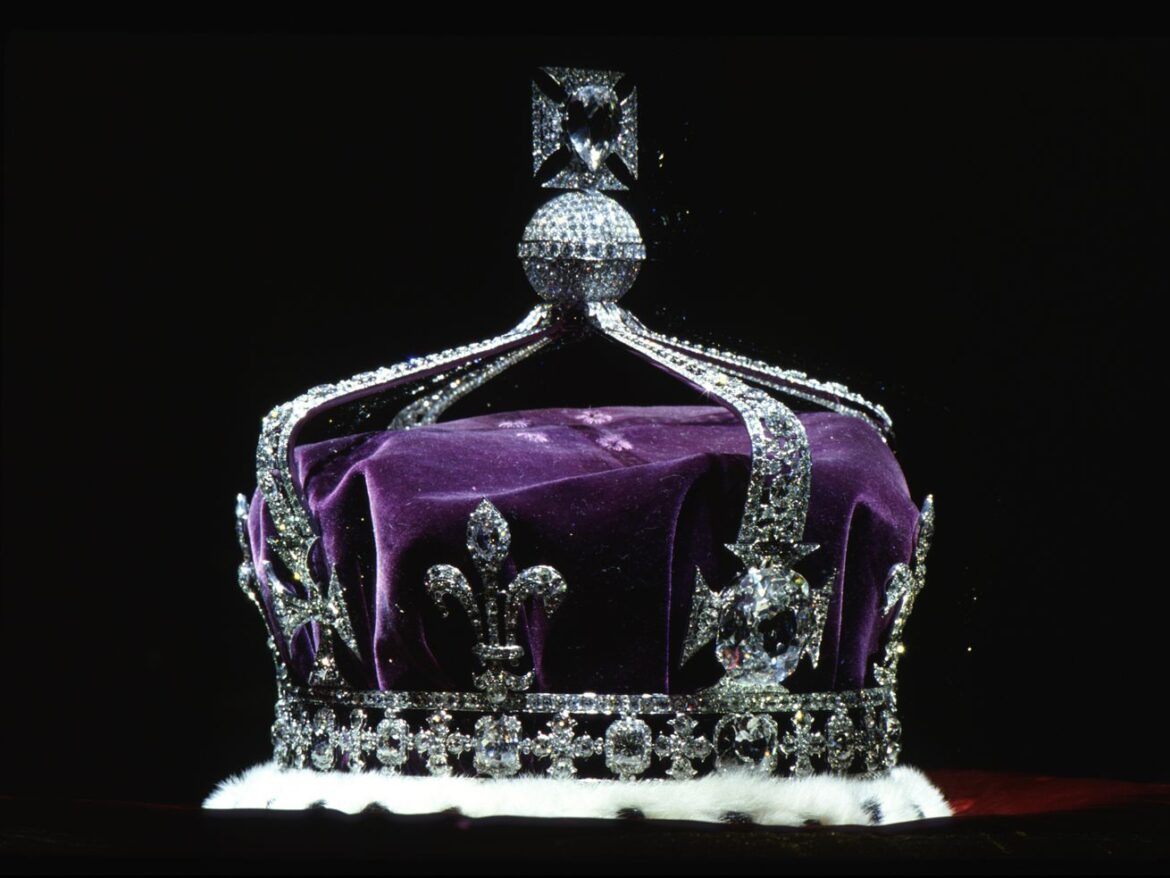Camilla chose not to wear the Queen Mother’s crown, but its ill-gotten jewel is still worth talking about.
When King Charles III and Queen Camilla are officially crowned at Westminster Abbey on Saturday, the Duchess of Sussex won’t be the only thing missing.
The controversy-stirring Kohinoor diamond — the 105-carat sparkler at the center of the violet crown Camilla was expected to wear — won’t make an appearance. The royals have good reason to want to keep the gem out of Saturday’s coronation festivities. The crown jewel of the crown jewels is widely considered an ill-gotten spoil of Britain’s colonial conquests, and calls for the British to return the stone to India have grown increasingly loud since the death of Queen Elizabeth II last year. (The current Indian government, under Narendra Modi, has vacillated on whether it wants the diamond back, but many others do.) The British have yet to heed them.
Flashing the Kohinoor (also sometimes spelled Koh-i-noor) might have attracted the wrong sort of attention, but attempting to simply hide away a colonial past doesn’t work when it comes to the royals: With the death of the queen last year came a massive reassessment of the symbolism of British royalty and the moral and cultural wrongs of colonialism it has perpetrated and continues to condone explicitly and implicitly, particularly by keeping plundered artifacts. Even in trying to avoid one controversy, they’ve stepped into another one. The Cullinan diamonds, chipped off a massive diamond taken from South African mines, will be part of the coronation, and sure enough, South Africans want those back, too.
The Kohinoor landed in British hands in the 1840s, when the colonial British East India Company wrested it, and other property and land, from an Indian boy-king — a Sikh emperor who was just 10 or 11 at the time — in the cruelest of ways. The British imprisoned his mother, leaving him no choice but to turn over the gem.
It was no accident: Vox has reported that the British plundered an estimated $45 trillion (in today’s currency) from India during its reign. It took art, artifacts, property, and lives. The Kohinoor, found in a mine in what is today the city of Hyderabad, had a storied history, having been set in the bejeweled throne of Shah Jahan (of Taj Mahal fame) and plundered by the Afghans at some point (the Kohinoor is also claimed by Afghanistan). The British had been angling for the famed stone for years, simply waiting for the right mark. They found it in a prepubescent boy.
The British have been hanging on to the stone — even slicing away at it until it shined and glittered in a way that appealed to distinctly Western tastes — ever since. After making an appearance as a brooch worn by Queen Victoria, it eventually landed on the purple-flecked crown of the Queen Mother.
Objects snatched up in the age of empire, as well as during the Nazi regime, have become cultural hot potatoes in recent years: Under pressure from other governments to return what is rightfully theirs, museums in the US and Europe have begun sending back (also known as repatriating) Nigeria’s Benin Bronzes, the Italian Orpheus and the Sirens, and Cambodia’s Khmer art, among other antiquities.
But the British remain unapologetic holdouts, arguing to Greece that the Elgin Marbles were gainfully acquired, having been stripped from the Parthenon with permission from the Ottomans (colonizers themselves). Egyptians have lobbied for the return of the Rosetta Stone, which has sat in the collection of the British Museum since 1802. No dice there, either.
The words of Rudyard Kipling’s “The White Man’s Burden” come to mind when trying to understand why the British don’t want to return precious artifacts to countries that would like to have parts of their culture back. The country’s actions suggest it doesn’t believe a poor brown nation is a capable steward of its own people or its own rich culture.
The British, for all we can figure, loved empire, and still do today. The Kohinoor diamond has long been “a symbol of potency rather than beauty,” Anita Anand, who with historian William Dalrymple wrote the definitive book on the Kohinoor, told Smithsonian Magazine. The Kohinoor will stay with the British for at least a while longer; they’ve already made plans to display it late this month at the Tower of London, as a “symbol of conquest.”
That an effectively looted jewel is set in a crown is highly symbolic — symbolic of the British Empire’s legacy of bloody conquest, of subjugating brown and Black people, and of having made off with the artifacts that help carry on a culture. Simply hiding it away on coronation day doesn’t change that.



